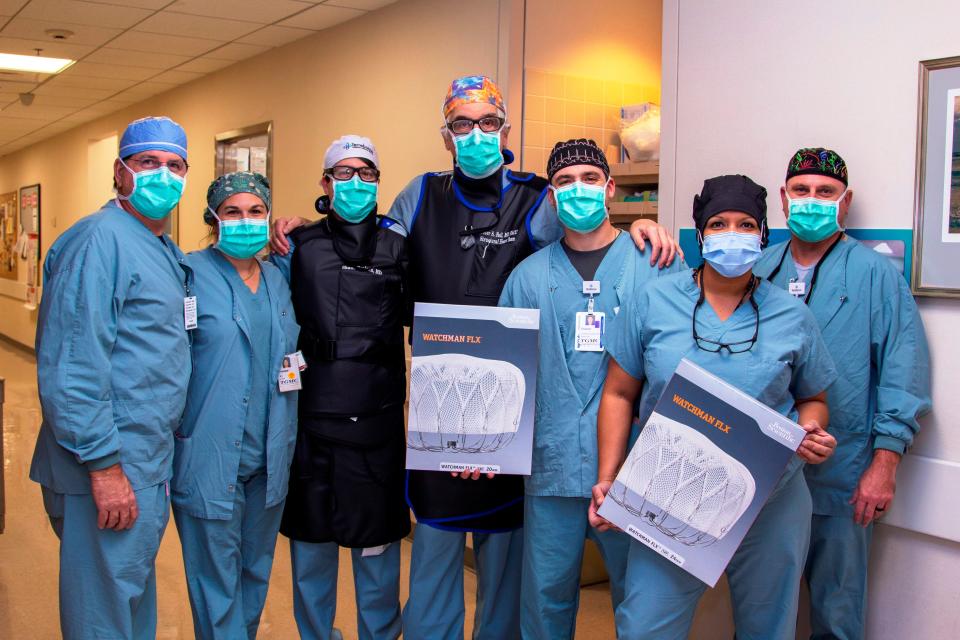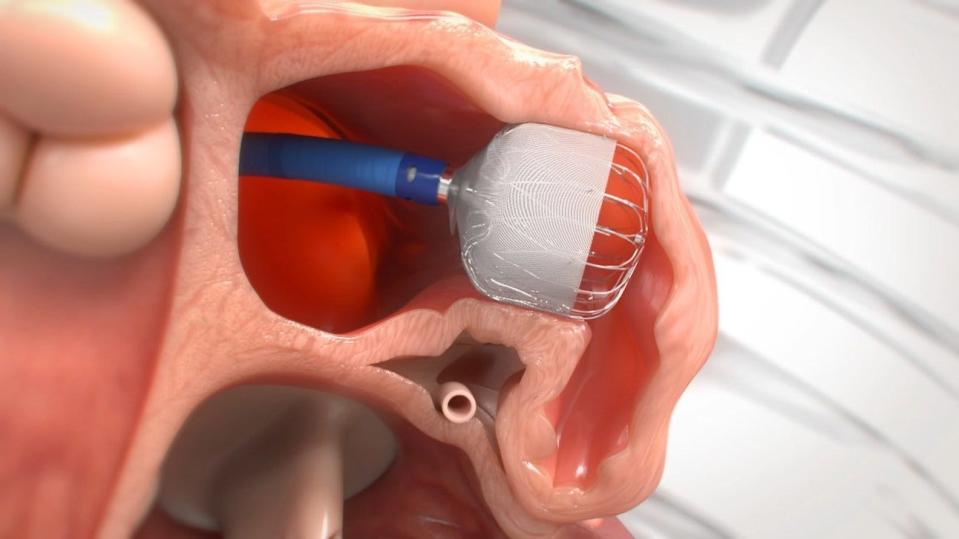Stroke-fighting heart implant used for first time in Houma area
For the first time in the Houma-Thibodaux area, local doctors have performed a minimally invasive procedure that uses an implant in one of the heart's chambers to help prevent stroke.
Cardiovascular Institute of the South interventional cardiologists Drs. Peter Fail and Shane Prejean performed the first Watchman device implants Jan. 21 at Terrebonne General Health System.
The FDA-approved procedure is done to prevent a stroke caused by atrial fibrillation, a common condition that causes the heart to beat irregularly.
Health news: COVID deaths in Louisiana increase as spread tops prior surges, state reaches Omicron peak
The Watchman device is a one-time heart implant that reduces stroke risk related to atrial fibrillation and eliminates the need to take blood thinners, the doctors said. Doctors insert a narrow, flexible catheter through an artery near the patient's leg and run it through veins and into the heart. About the size of a quarter, the Watchman device, at the catheter's tip, is placed into the left atrial appendage of the heart, where 90% of stroke-causing blood clots are formed.

The device permanently closes off that part of the heart to keep blood clots from escaping.
The procedure takes about an hour in a cardiac catheterization lab or hybrid operating room. Doctors say the post-procedure hospital stay is one day, with the possibility of being discharged home the same day.
“For patients who are dependent on blood thinners due to atrial fibrillation, this is a life-changing procedure,” Frail said in a news release. “Within 45 days of the implant, 90% of patients are able to stop taking blood thinners, giving them back quality of life and eliminating medication side effects.”

As many as 3 million people in the U.S., and most with atrial fibrillation, need to take blood thinners to reduce their risk of stroke, he said.
However, oftentimes patients on blood thinners are unable to work certain jobs, such as construction or plant environments, the doctors said. Those patients are also often required to make frequent visits to a clinic for tests to monitor and manage their blood thinner medication.
“A patient with atrial fibrillation is five times more likely to experience a stroke, and it is critical for these patients to take blood thinners as prescribed,” Prejean said. “However, for patients who qualify, this new treatment offers a safe alternative that removes long-term risks and management associated with blood thinners.”
This article originally appeared on The Courier: Stroke-fighting heart implant used for first time in Houma area

